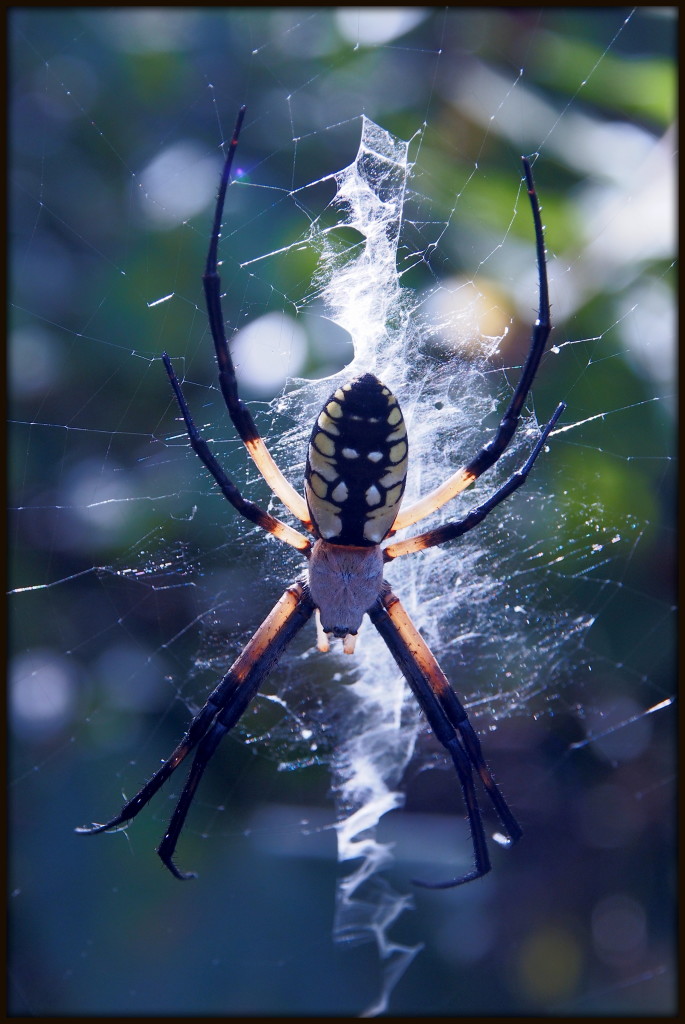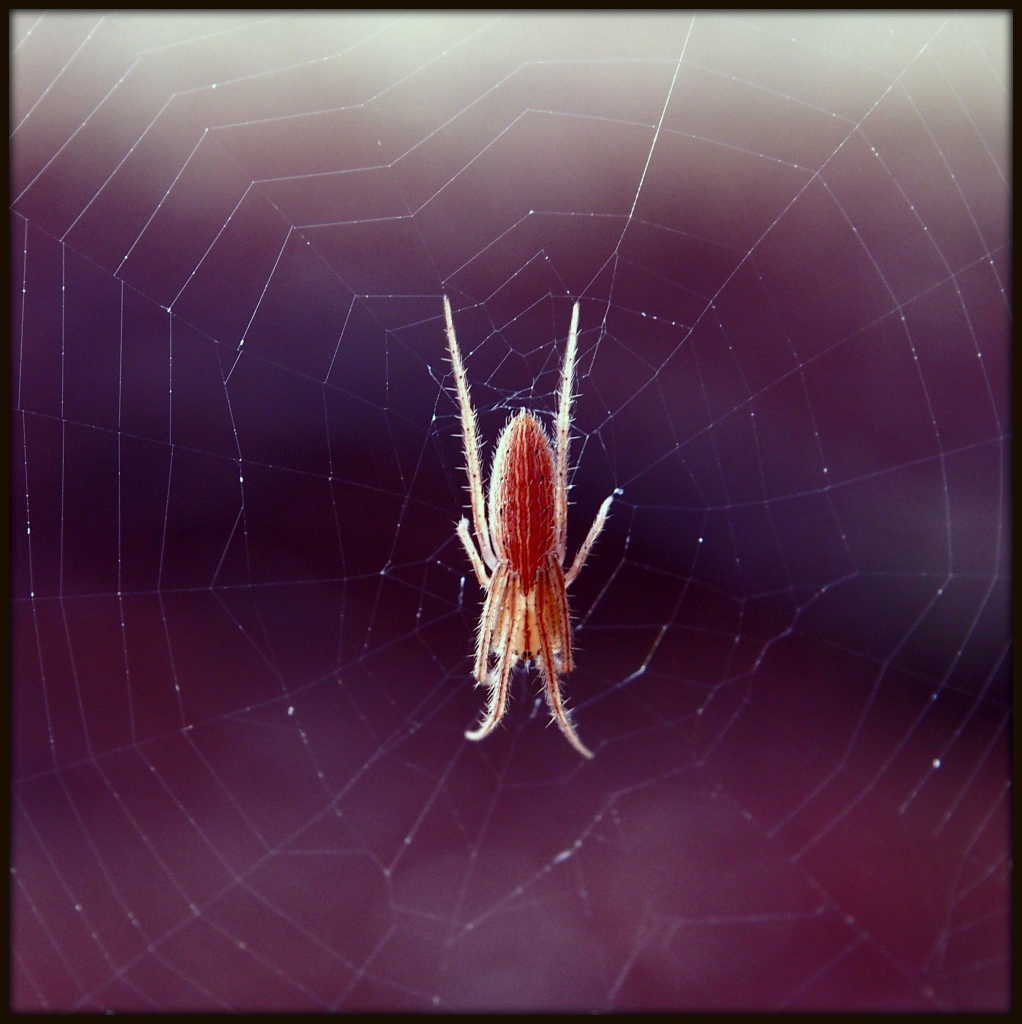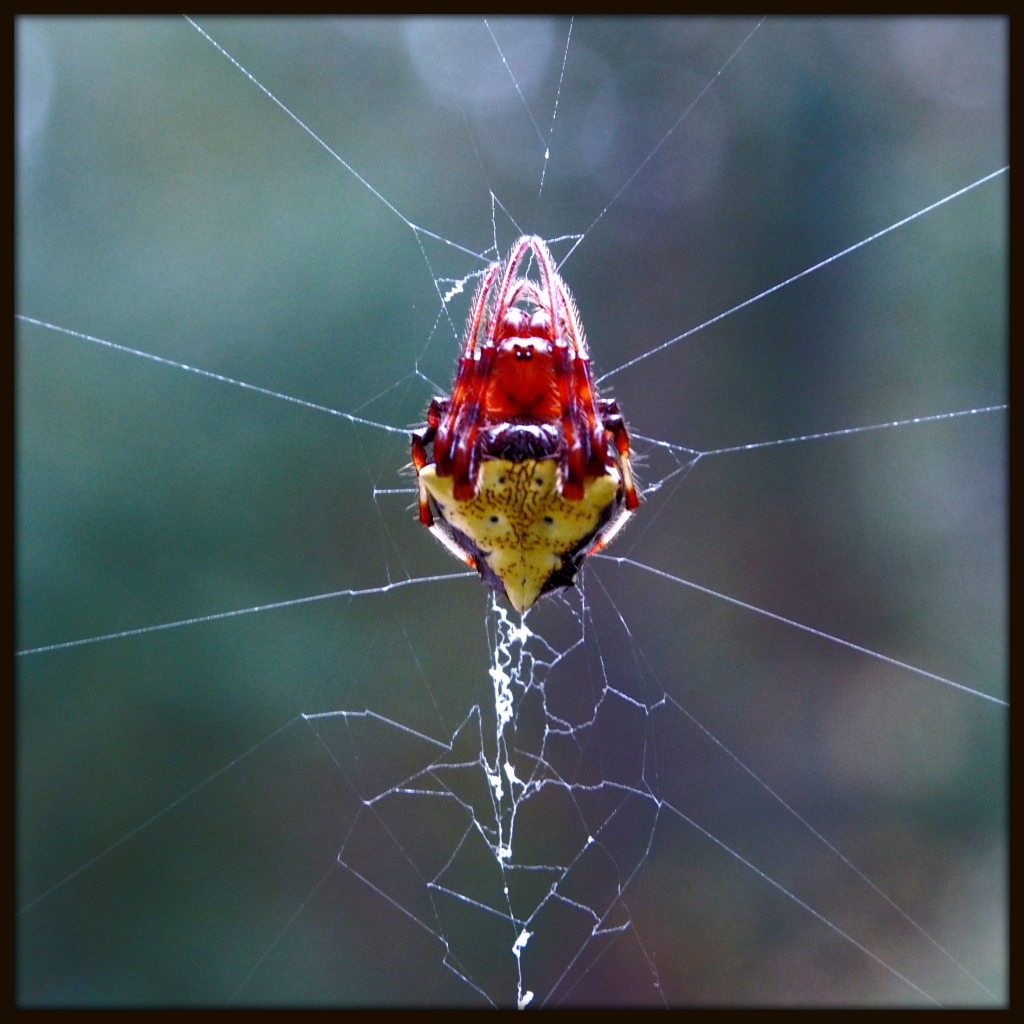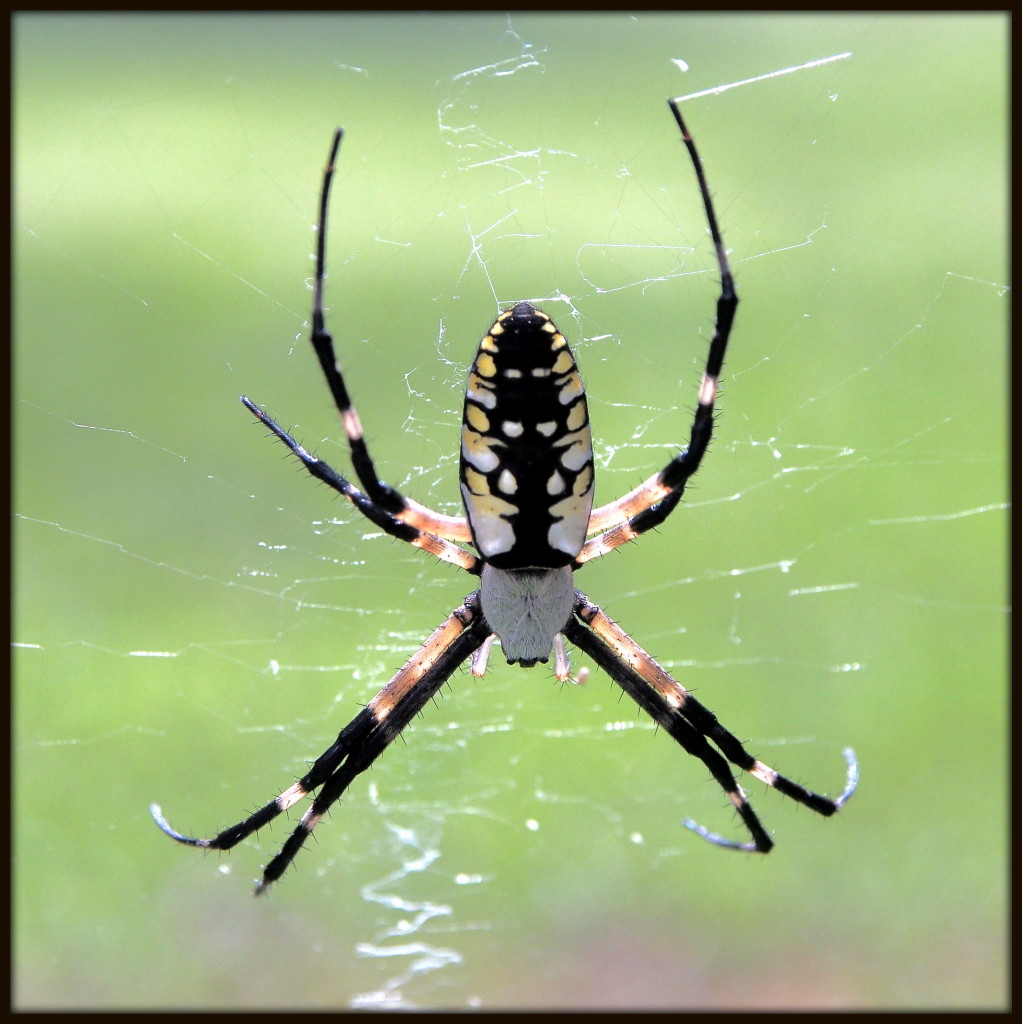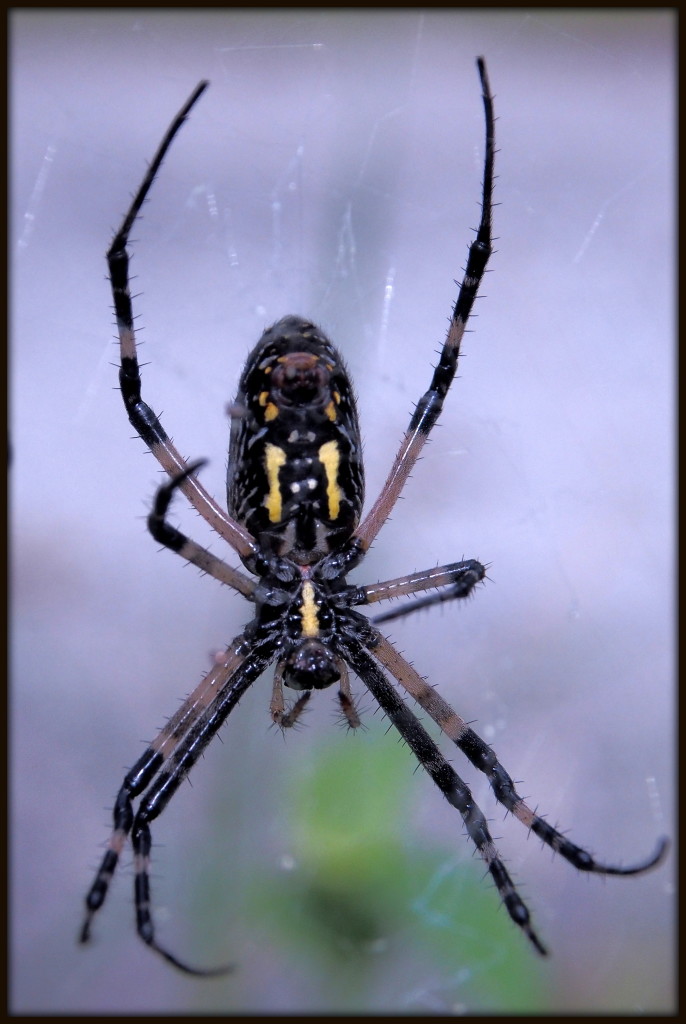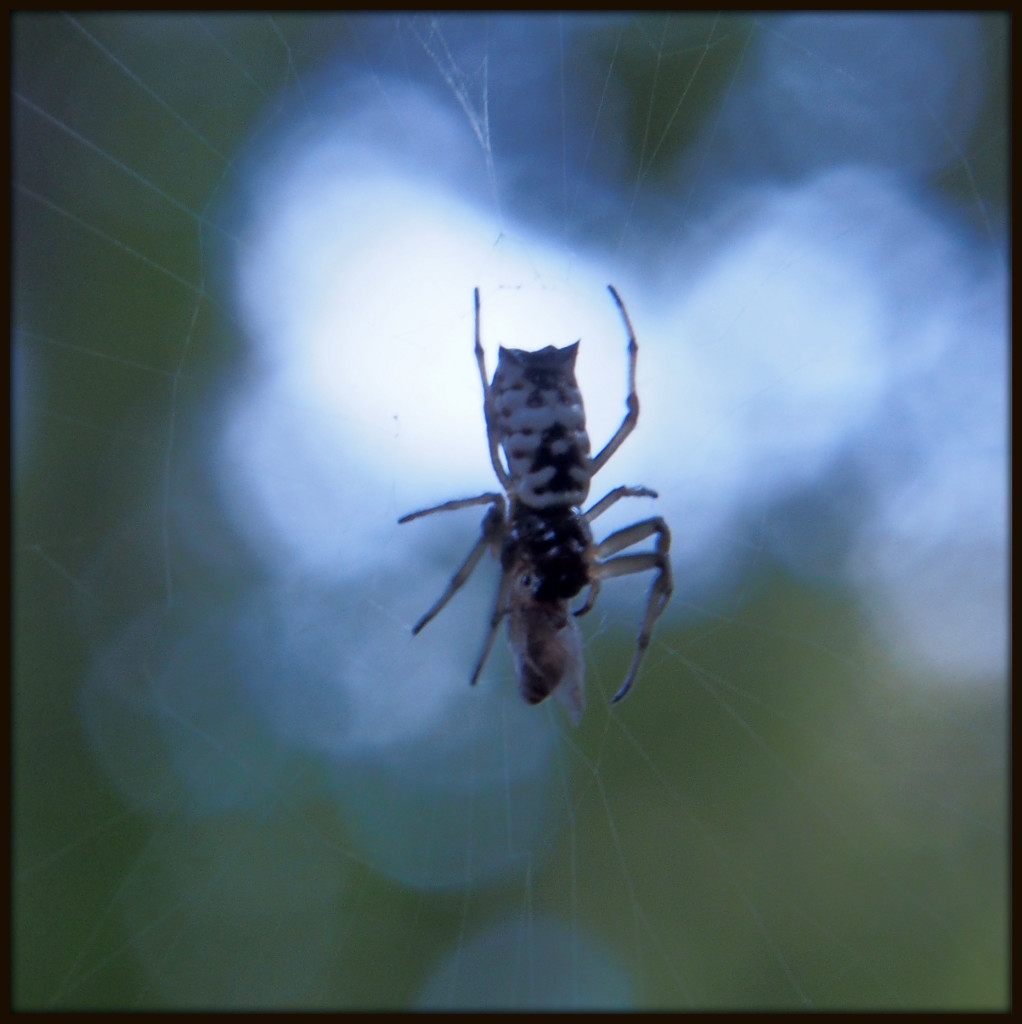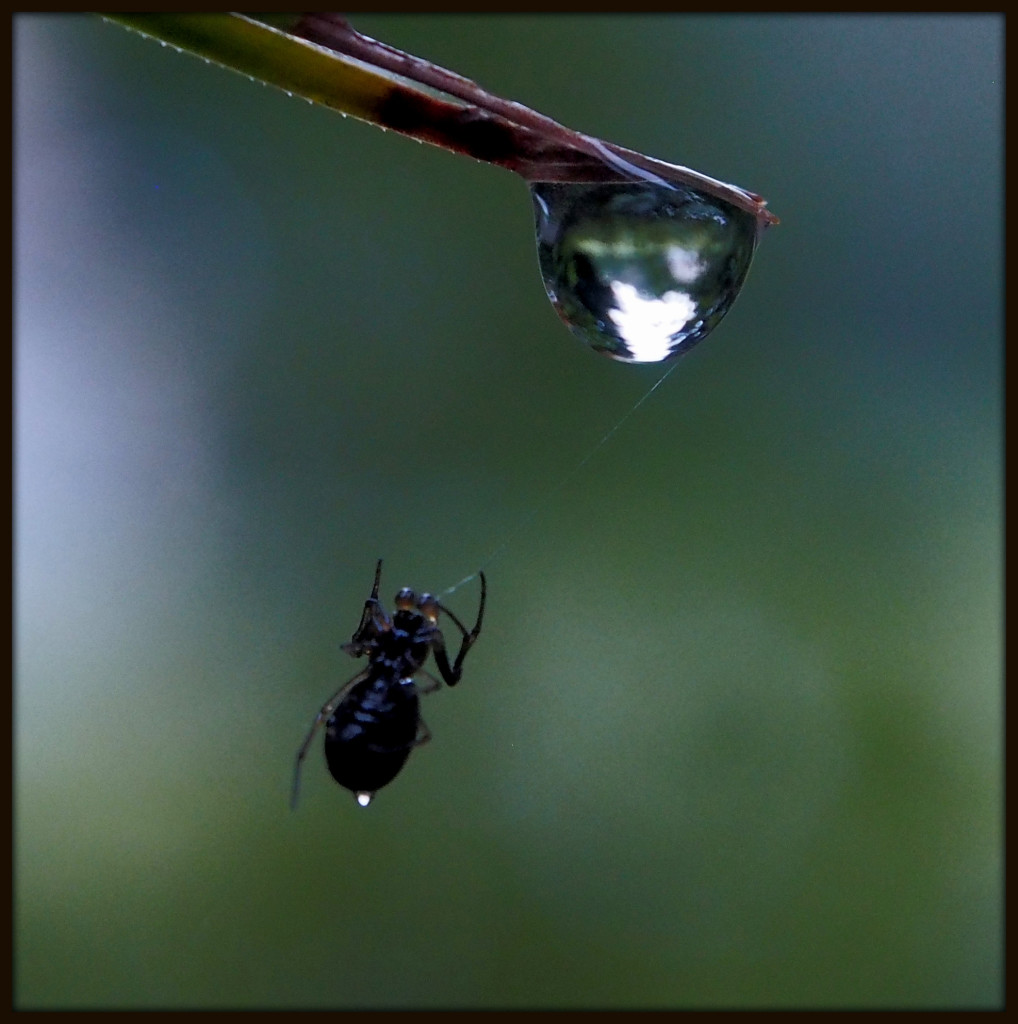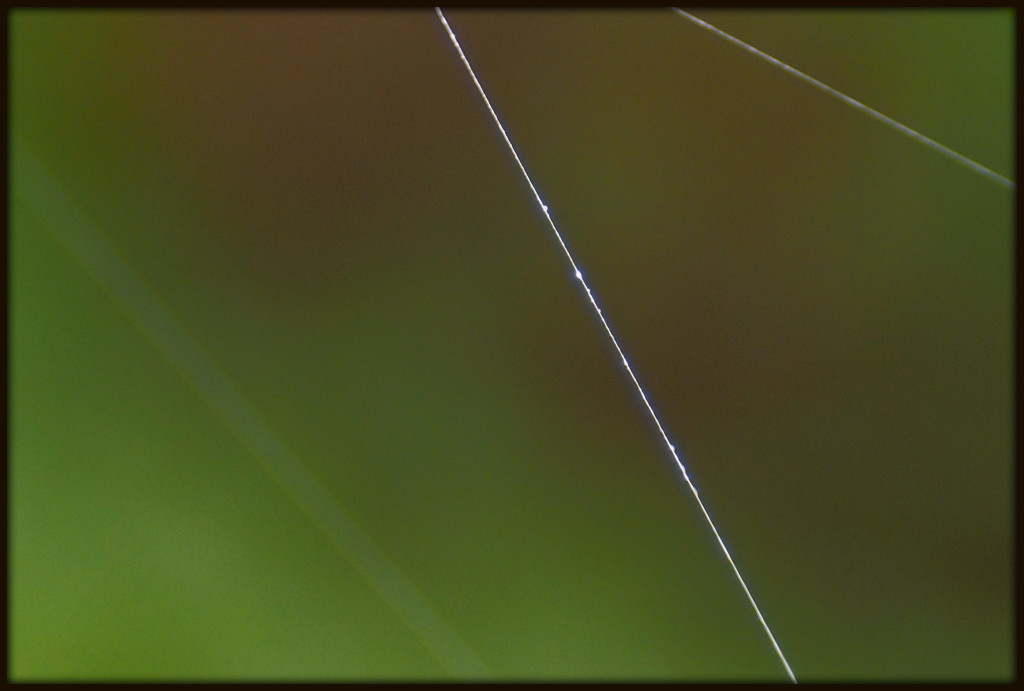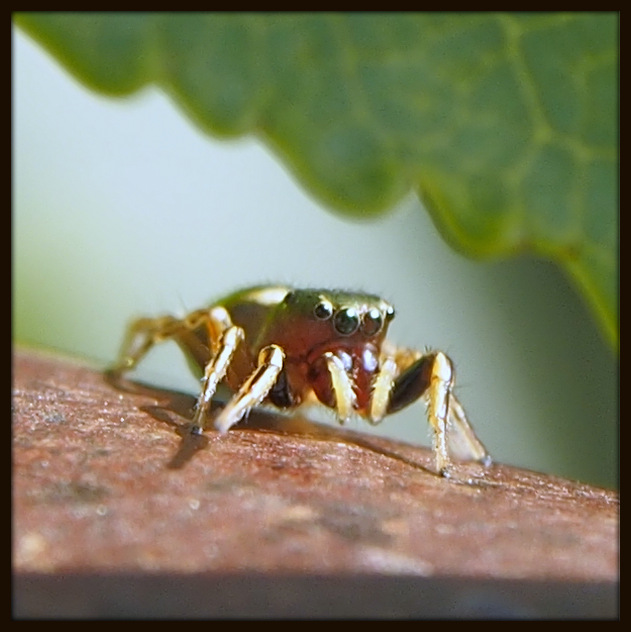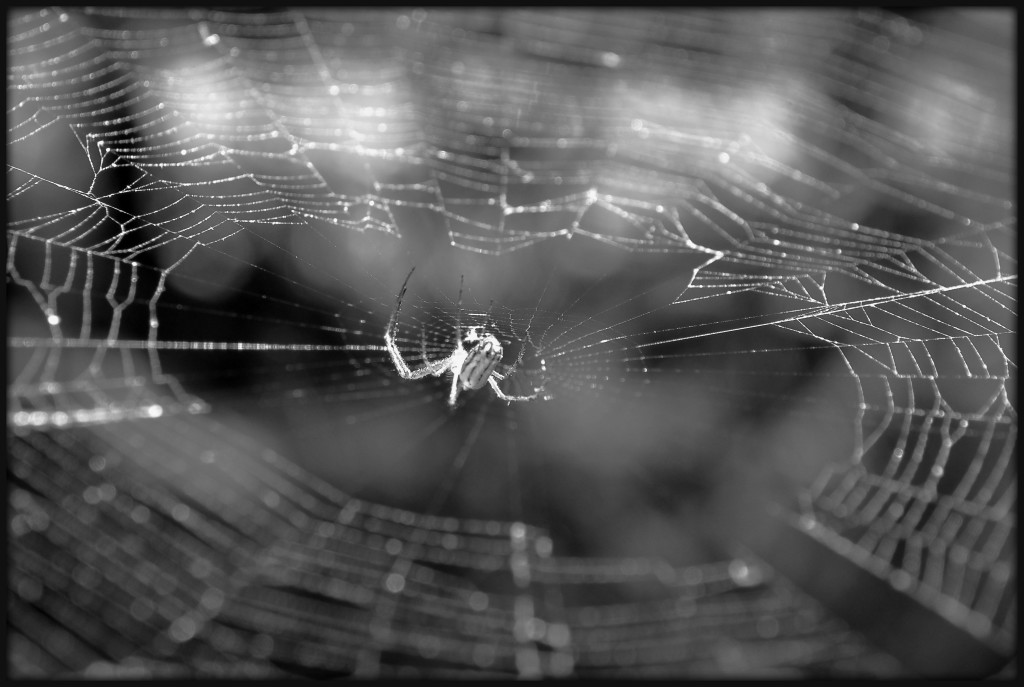With an hour to spare before leaving for an afternoon workshop in Atlanta on Radical Mycology, I decided to set out for a late-morning stroll down Piney Woods Church Road. I had not ventured far when I came upon the web of the most immense spider I have yet encountered on my walks: a female Yellow Garden Spider (Argiope aurantia), easily two inches in length. She is one of the most lovely of spiders, and I gratefully took a number of photographs of her. Then I noticed a new wildflower blooming from an adjacent vine, and I bent down to take several shots of the small, purplish-white blooms. It was then that I noticed my hands.
Both of them were covered, from fingertip to wrist, with tiny moving specks. They weren’t biting — yet. And they were so small that I could barely feel them on my skin. I was seized with terror: could these be chiggers? There are few things I am terrified of in the Georgia forest — there is lightning, certainly, but otherwise, chiggers top my list. I frantically rubbed my hands together , trying to free them from me before they could clamber higher up my arms. Even now, as I type this, having sprayed my hands with bleach and rinsed them with soapy water, I still noticed a couple of the tiny specks on the move.
What is strange is that I am not clear how so many got onto my hands so quickly. I did not place my hands in anything — so they must have fallen from the trees above or jumped collectively from a particular spot. Were they chiggers? I suspect that I will learn that soon enough.
The spider is beautiful, and quite harmless, unless you are an insect that happens into her web.
